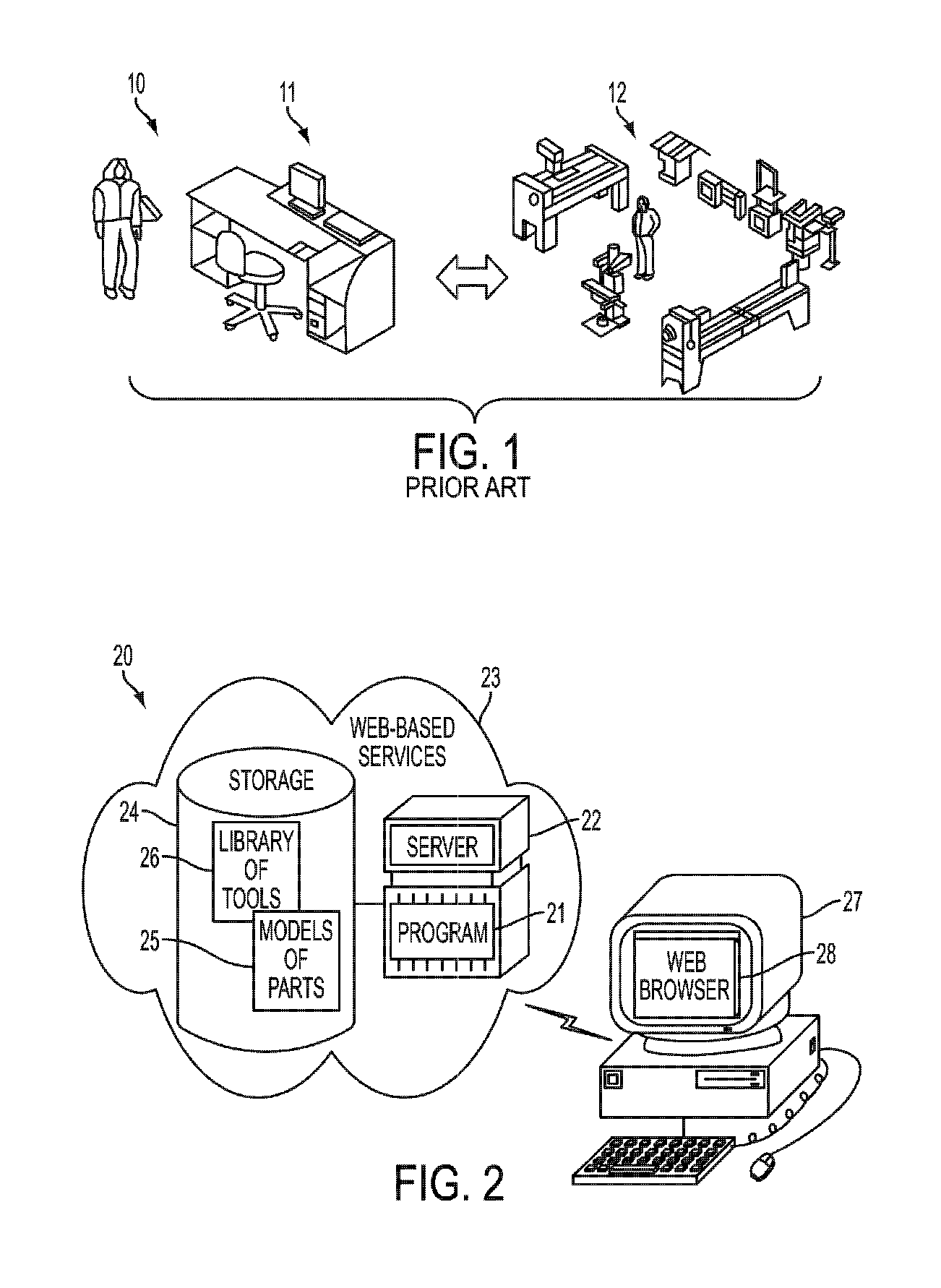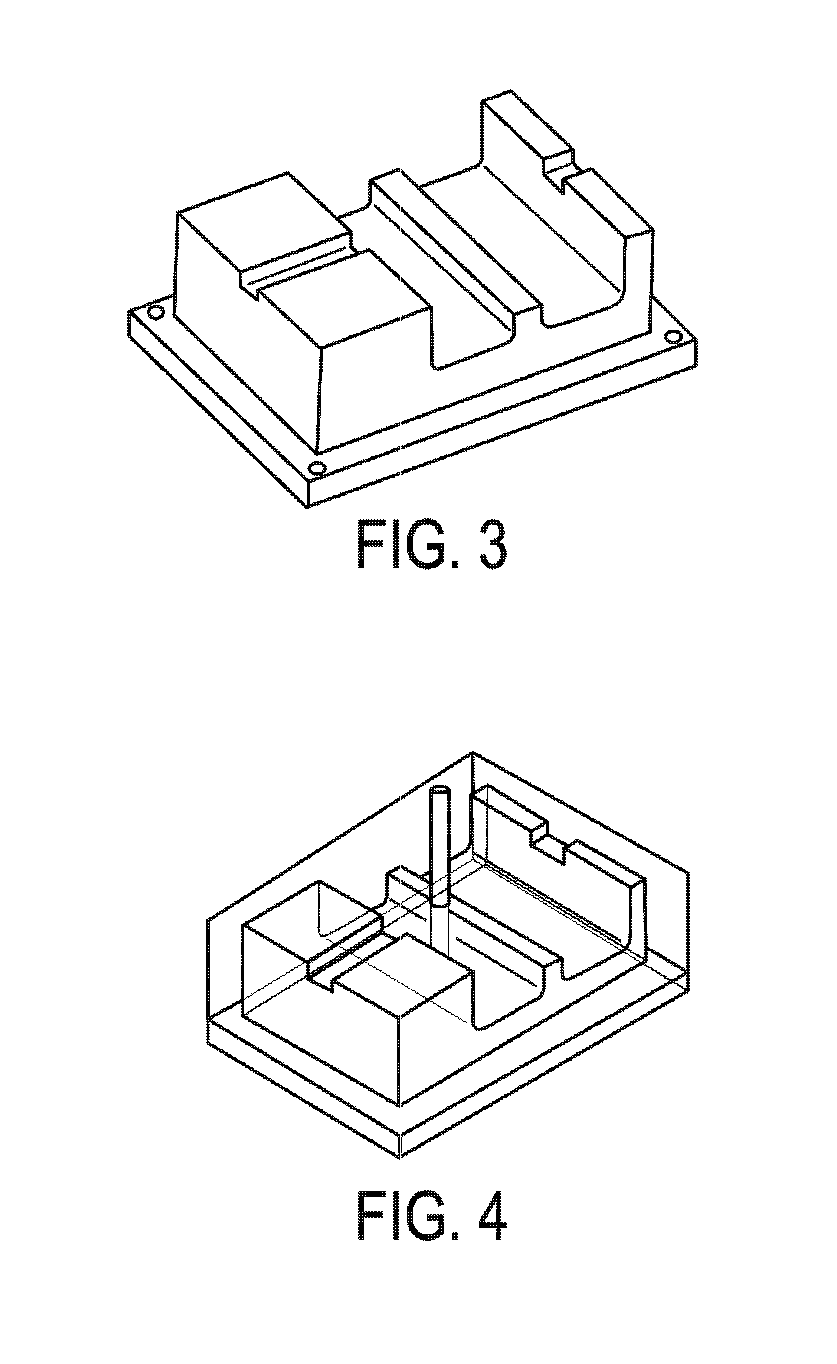Computer-Implemented System And Method For Analyzing Machined Part Manufacturability And Performing Process Planning
a machined part and process planning technology, applied in the field of computer-implemented system and process planning, can solve the problems of time-consuming and expensive iterations required to perform validation of human-generated manufacturing process plans, limited machining space, and inability to perform manufacturability analysis and automation of process plans
- Summary
- Abstract
- Description
- Claims
- Application Information
AI Technical Summary
Benefits of technology
Problems solved by technology
Method used
Image
Examples
Embodiment Construction
Prior Art Validation of Human-Generated Manufacturing Process Plans
[0024]Traditionally, design and manufacture within an organization are operated as closely-related, yet functionally separate spheres of activity. Product design generally occurs first, followed by product realization and manufacture. The design of a part is treated as a discrete output from a design department and the validation of human-generated process plans for manufacturing the part occurs between the conclusion of design and commencement of product manufacturing.
[0025]Conventional approaches to manufacturing process planning strive to better integrate product lifecycle management and physical shop floor production, while incidentally emphasizing the distinctions between design and manufacture. FIG. 1 is a functional block diagram showing, by way of example, a prior art system 10 for validation of human-generated manufacturing process plans. Manufacturability is evaluated during a subsequent stage in the produc...
PUM
 Login to View More
Login to View More Abstract
Description
Claims
Application Information
 Login to View More
Login to View More - R&D
- Intellectual Property
- Life Sciences
- Materials
- Tech Scout
- Unparalleled Data Quality
- Higher Quality Content
- 60% Fewer Hallucinations
Browse by: Latest US Patents, China's latest patents, Technical Efficacy Thesaurus, Application Domain, Technology Topic, Popular Technical Reports.
© 2025 PatSnap. All rights reserved.Legal|Privacy policy|Modern Slavery Act Transparency Statement|Sitemap|About US| Contact US: help@patsnap.com



